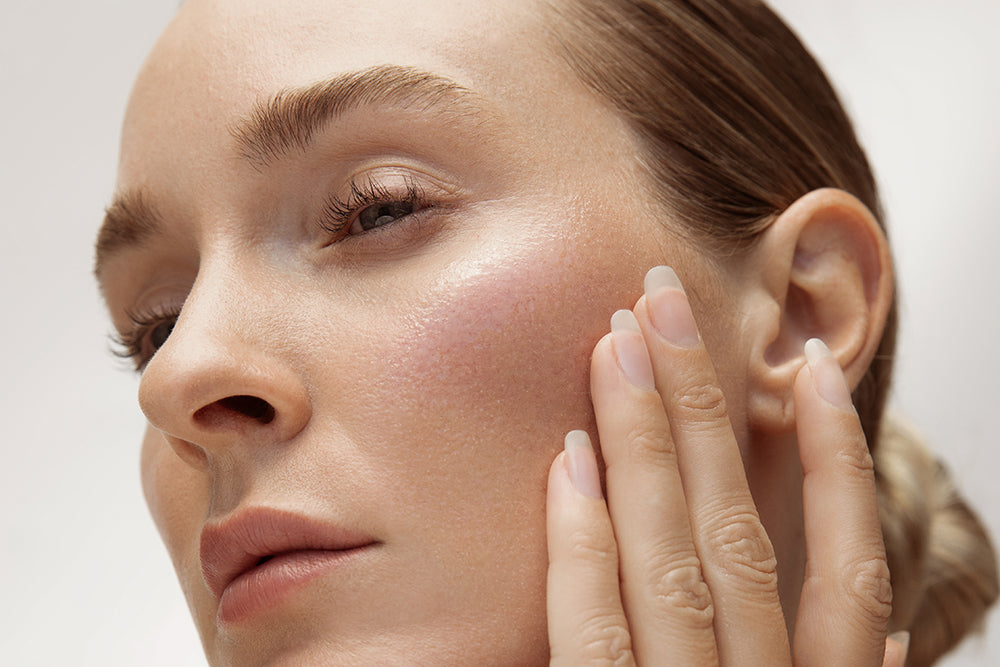
ingredient focus: elderberry

the bottom line
elderberry is one of the most prized natural remedies for colds and the flu. but did you know that it also plays a role in skincare? look under the surface of many skincare products and you’ll find Sambucus nigra, or elderberry, tucked in towards the end of the ingredient list. although it’s used in small amounts, it plays a big role. read on to discover the true wisdom of the elders.
first layer: the history
Sambucus nigra, or elderberry, is native to Europe, northwest Africa, and southwest Asia, favoring wet and dry fertile soils located in sunny spots, in forests, and along riversides. It’s a tall fellow, capable of growing up to 30 feet (9 meters) tall, with clusters of small white- or cream-colored flowers and berries found in small black or blue-black bunches.
Elderberry has a long and proud history: Hippocrates (460-370 BC) recommended it for constipation and menstrual pain, while Pliny the Elder (23-79 BC) favored its diuretic properties. Dioscorides (40-90 BC) reported the use of its leaves for the topical treatment of boils. During the Middle Ages, elderberry was also used to treat gout, vertigo, and respiratory diseases, and in 1644 an entire book, The Anatomie of the Elder, was devoted to its praises. Even Prometheus played a role, as he is said to have used the hollowed stem of an elder tree to bring fire to man on earth. The tree has a long association with magic – during the Middle Ages, leaves of the elder tree were placed around the entrances to houses to ward off evil spirits and witches. In modern times, dried elderberries are often added to tea or herbal mixtures to help ease colds and viral illnesses.
second layer: the science
As with many traditional remedies, there’s real science behind the tradition. Although there are a large number of uses for this shrub based on folklore, there’s also good clinical evidence to suggest that elderberry is effective for the treatment of fevers, flu, head colds, and inflammation.
Just to refresh ourselves about the critical role of oxidation – as we age, we’re exposed to injuries in the form of ultraviolet radiation, pollution, smoking, and alcohol, all of which can produce free radicals. Free radicals create oxidative stress and an inflammatory response which in turn can damage DNA and result in injury to the epidermal and dermal layers of the skin. In the skin, this manifests as premature aging with decreased elasticity leading to increased wrinkling, age spots, and decreased skin tone. Here’s where antioxidants come into play: antioxidants stabilize free radicals, which in turn limits their ability to damage the body.
Elderberries play an important role in helping to combat the environmental attack on our skin. They contain over 50 chemicals which have been shown to be beneficial to human body. Elderberry’s active chemical compounds - anthocyanins, flavonoids, tannins, and triterpenes - lend it anti-inflammatory, antioxidant, antibacterial, anti-viral, and astringent properties. Anthocyanins, which give the berries their dark purple color, are particularly remarkable for their anti-oxidant and anti-inflammatory effects.
Elderberries also contain vitamins A and C, phenolic compounds, beta-carotene, iron, potassium, and phytosterols. Phenolic acids are powerful anti-oxidants which help to reduce damage secondary to oxidative stress. The immune benefits of elderberry appear to stem from the antiviral properties of Sambucus, as bioflavonoids in elderberry extract may inhibit the entry of viruses into cells.
third layer: the skin
Skin loves elderberry. Its antioxidants provide protection against free radicals that contribute to cell damage and wrinkle formation. The bioflavonoids within elderberry has astringent properties that help to tighten skin, thus providing us with more ways to fight wrinkles.
Elderberry is frequently used to boost preservative systems, as it contains undecylenic acid, a fatty acid with both broad antimicrobial and anti-fungal effects.
Finally, elderberry has been shown to have a high level of photostability and protect against ultraviolet (UV) radiation, making it a potential ingredient for sunscreen formulations. But as fascinating as this is – the Food and Drug Administration (FDA) hasn’t studied the data for the use of Sambucus nigra as a sun protectant, and therefore it’s not appropriate to use this ingredient as an SPF, or to make any claims in that regard.
fourth layer: how we do it
We like to tuck a little elderberry into our products, too. Find it in our lotus & lychee facial crème, where it plays a role in the fight against free radicals as well as microbes and fungi. It’s a natural superhero.
All this and more at www.anokhaskincare.com .
Add a layer by joining our newsletter .
xx
anokha
references:
- Gladstar R. Medicinal Herbs. (2012) Storey Publishing: North Adams.
- healthline.com
- Lin P, Hwang E, Ngo HTT, Seo S, Yi TH. Sambucus nigra L. ameliorates UVB-induced photoaging and inflammatory response in human skin keratinocytes. Cytotech 2019; 71: 1003-1017.
- Duymus HG, Goger F, Baser KHC. In vitro antioxidant properties and anthocyanin compositions of elderberry extracts. Food Chem 2014; 155: 112-119.
- Jaric S, Kostic O, Mataruga Z et al. Traditional wound-healing plants used in the Balkan region (Southeast Europe). J Ethnopharmacol 2018; 211: 311-328.
- Van Wyk BE, Wink M. Medicinal Plants of the World. (2004) Timber Press: Portland.
- The Herb Society of America’s Essential Guide to Elderberry. Accessed 6/6/2021.
- European Medicines Agency: Assessment report on Sambucus nigra L. fructus. Accessed 6/6/2021.
- Porter RS, Bode RF. A Review of the Antiviral Properties of Black Elder (Sambucus nigra L.) Products. Phytother Res 2017; 31(4): 533-554.
- Jarzycka A, Lewinska A, Gancarz R, Wilk KA. Assessment of extracts of Helichrysum arenarium, Crataegus monogyna, Sambucus nigra in photoprotective UVA and UVB; photostability in cosmetic emulsions. J Photochem Photobiol B 2013; 128: 50-57.



leave us a comment
This site is protected by hCaptcha and the hCaptcha Privacy Policy and Terms of Service apply.